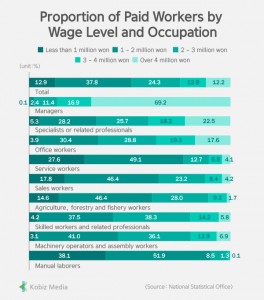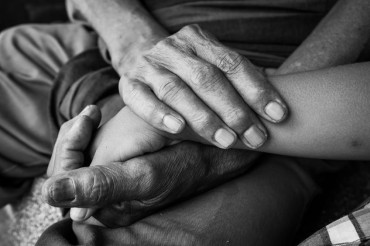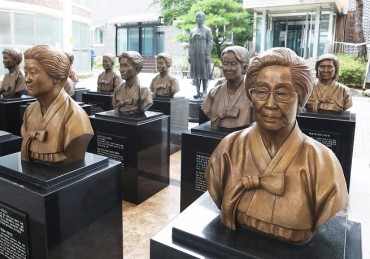
According to the report, the total number of salaried workers as of the second half of last year was 18,489,000.(image:melburnian/flickr)
SEOUL, Korea, May 1, 2014 (Korea Bizwire) – About half of salaried workers in Korea are earning less than 2 million won (US$1,937) a month, reflecting growing income inequality in the society. Meanwhile, about 30 percent of those in financial services and science and technology professions earn monthly pay of more than 4 million won.
More than half of those in agriculture and fishery jobs, in contrast, make less than 1 million won a month, another sign of a widening gap between the haves and the have-nots. The National Statistical Office released a report on April 30 describing such features by industry and profession.
According to the report, the total number of salaried workers as of the second half of last year was 18,489,000. Of these, those earning between 1 million and 2 million won took the largest portion at 37.8 percent. Including the workers earning less than 1 million won a month, the percentage of those making less than 2 million won a month was 50.7 percent in total.
The ratio of those earning between 2 million and 3 million won was 24.3 percent, followed by that of those making between 3 million and 4 million won at 12.8 percent and that of those taking home more than 4 million won a month at 12.2 percent.
The industrial sectors in which there is a higher number of workers receiving more than 4 million won a month were science and technology and financial services at 30.8 percent and 30.0 percent, respectively.
In contrast, the percentage of those earning less than 1 million won among farmers and fishermen was 56.9 percent. The ratio of those in the agriculture and fishery sector making in excess of 4 million won a month was a mere 3.4 percent.
As of the latter half of 2013, the total number of those engaged in gainful activities was 25,545,000. The largest industrial sectors employing workers were manufacturing (16.5%), wholesale and retail (14.4%), and lodging and restaurant (7.8%). By type of work, professionals and related occupations took the largest portion at 19.7 percent, followed by office and clerical work (16.8%) and manual labor (12.9%).
Written by Sean Chung (schung10@koreabizwire.com)
Money (Follow us@Moneynews_Korea)







